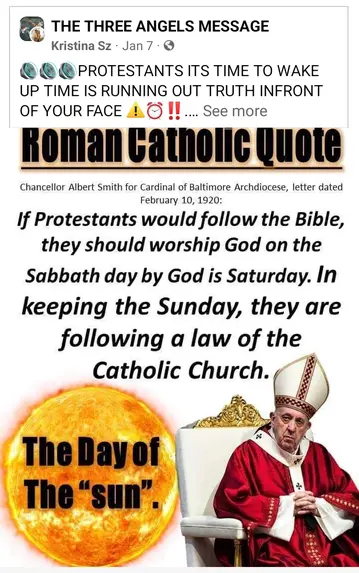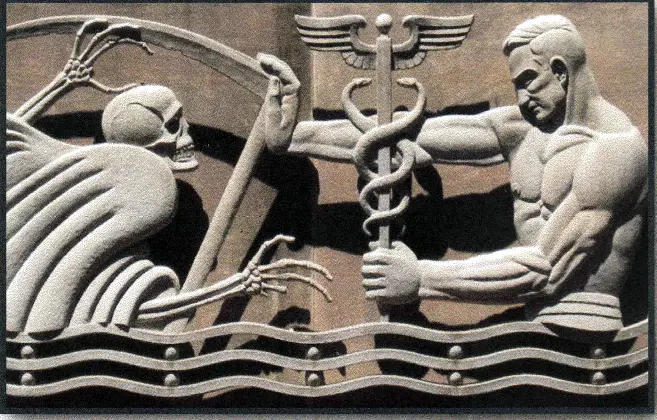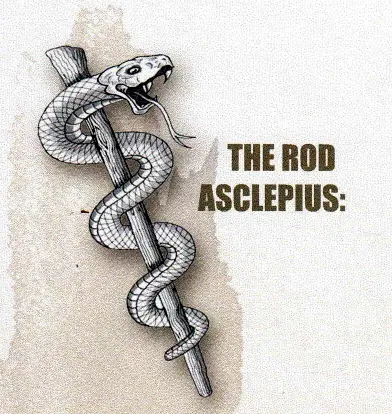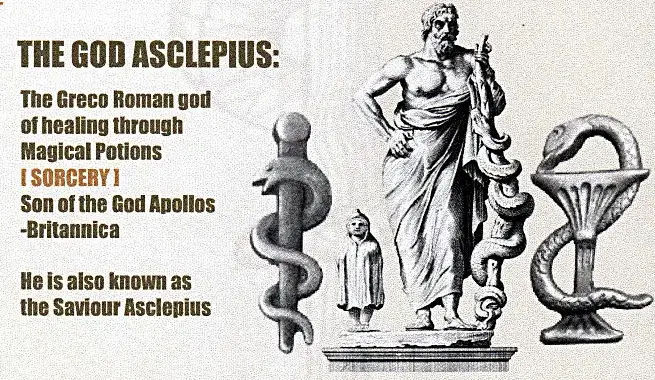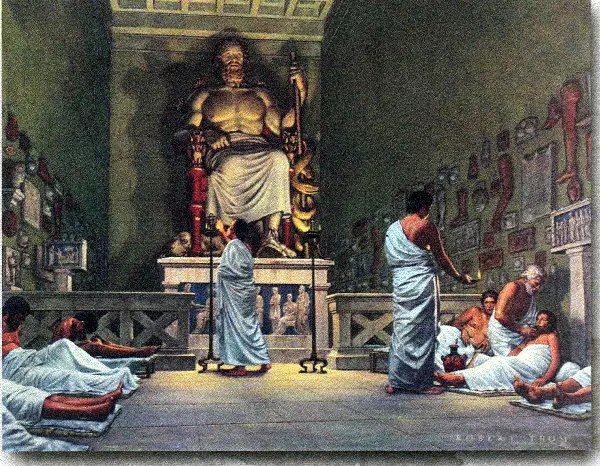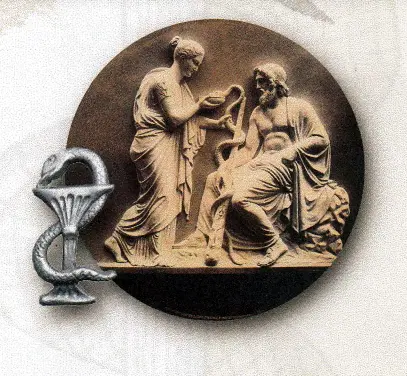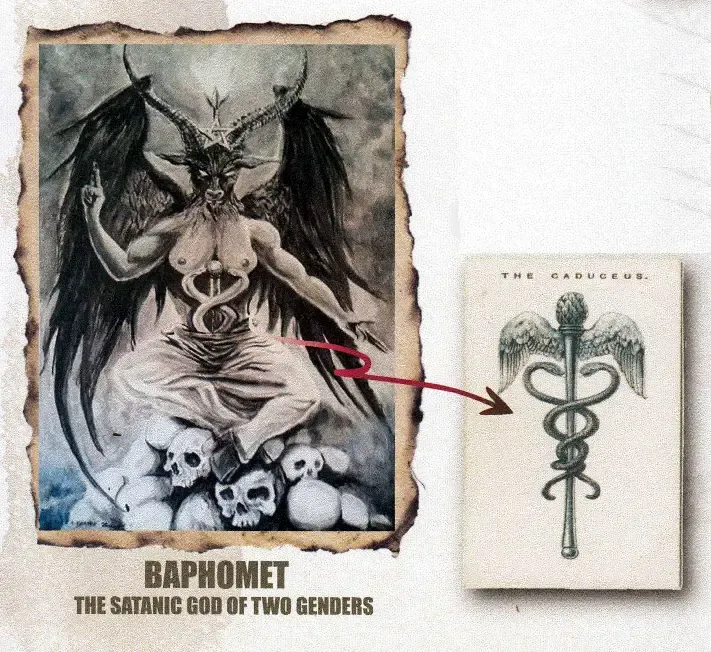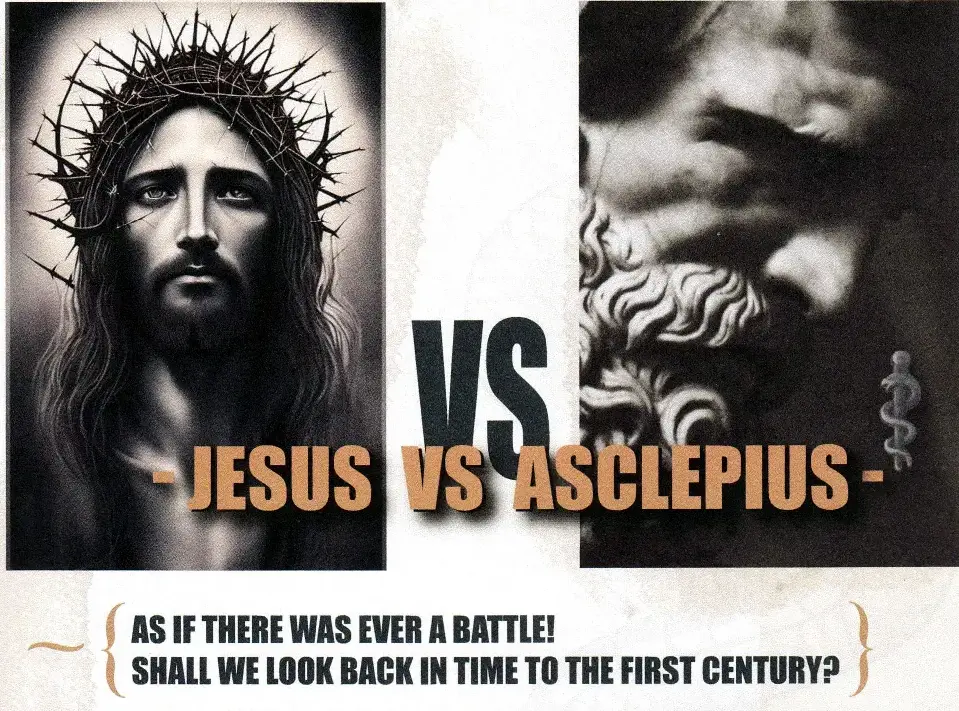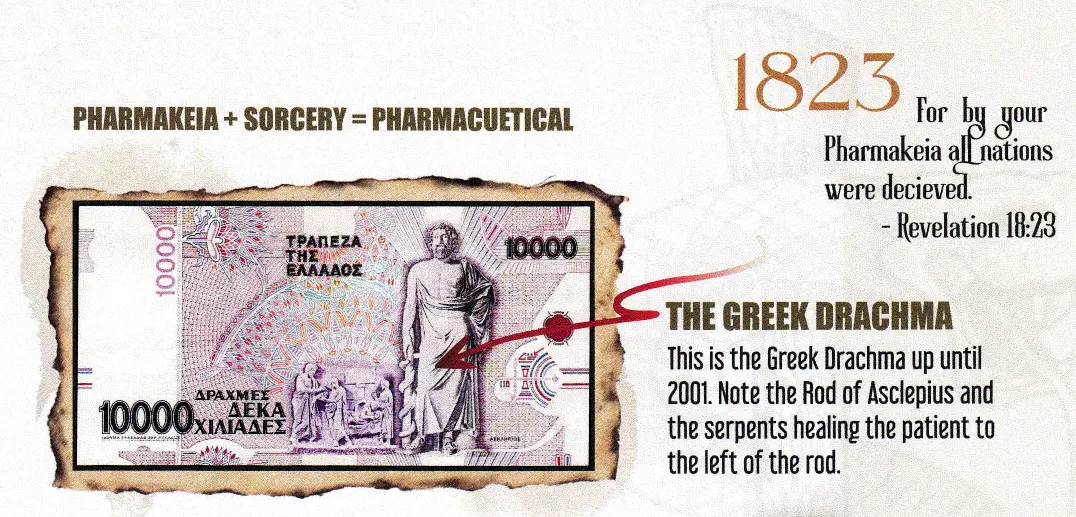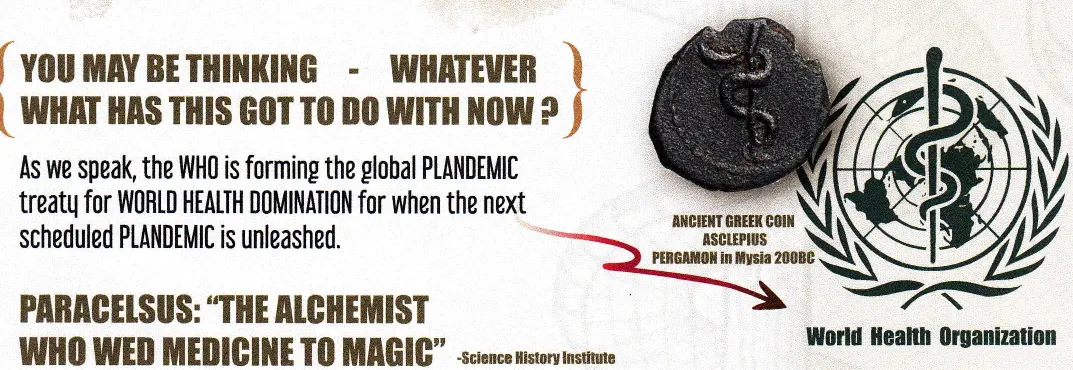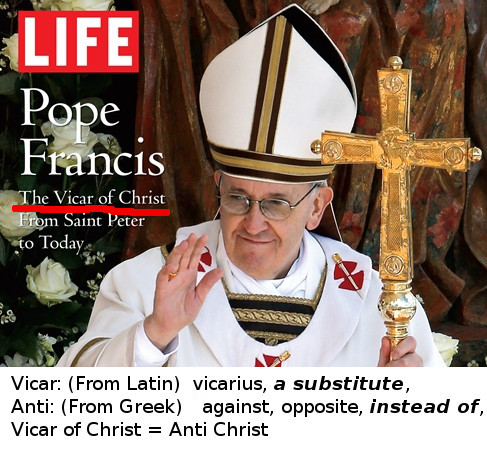By Jesse C. Stevens, 1923
THE Roman Catholic Church claims that Christ made the apostle Peter His successor, His vicar, or vicegerent, the visible and infallible head of the church, with power to bequeath that office to his successors; that he was given power and authority over all the other apostles and over the entire church; that Christ built His church upon Peter, and delivered unto him the keys of the kingdom of heaven. She claims that Peter was the first bishop of the church in the city of Rome, and that therefore all this privilege and power was handed down in succession to all the bishops or popes of that imperial city.
Scriptural Basis of the Claim
This claim, in so far as the Bible is concerned, is based upon the three following passages of Scripture:
1. “When Jesus came into the coasts of Caesarea Philippi, He asked His disciples, saying, Whom do men say that I the Son of man am? And they said, Some say that Thou art John the Baptist: some, Elias; and others, Jeremiah, or one of the prophets. He said unto them, But whom say you that I am? And Simon Peter answered and said, Thou art the Christ, the Son of the living God. And Jesus answered and said unto him, Blessed art thou, Simon Barjona: for flesh and blood hath not revealed it unto thee, but My Father which is in heaven. And I say also unto thee, That thou art Peter, and upon this rock I will build My church; and the gates of hell shall not prevail against it. And I will give unto thee the keys of the kingdom of heaven: and whatsoever thou shall bind on earth shall be bound in heaven: and whatsoever thou shall loose on earth shall be loosed in heaven.” Matthew 16:13-19.
2. “The Lord said, Simon, Simon, behold, Satan hath desired to have you, that he may sift you as wheat: but I have prayed for thee, that thy faith fail not: and when thou are converted, strengthen thy brethren.” Luke 22:31, 32.
3. “So when they had dined, Jesus said to Simon Peter, Simon, son of Jonas, love thou Me more than these? He said unto Him, Yea, Lord; Thou knows that I love Thee. He said unto him, Feed My lambs. He said to him again the second time, Simon, son of Jonas, love thou Met He said unto Him, Yea, Lord; Thou knows that I love Thee. He said unto him, Feed My sheep. He said unto him the third time, Simon, son of Jonas, love thou Met Peter was grieved because He said unto him the third time, Love thou Me? And he said unto Him, Lord, Thou knows all things; Thou knows that I love Thee. Jesus said unto him, Feed My sheep.” John 21:15-17.
Gospel, Acts, and Epistles the Only Authorities
This far-reaching claim in behalf of Peter and his successors demands a careful and critical examination; and the first evidence to be considered is naturally found in the New Testament. What, if any thing, was conferred upon Peter by Christ’s words? What privilege, if any, did Peter possess that the other apostles did not have? First of all, the Gospels, the Acts, and the Epistles necessarily contain the means of ascertaining what Peter enjoyed and exercised by virtue of Christ’s words:
“I say also unto thee that thou art Peter, and upon this rock I will build My church; and the gates of hell shall not prevail against it. And I will give unto thee the keys of the kingdom of heaven: and whatsoever thou shall bind on earth shall be bound in heaven: and whatsoever thou shall loose on earth shall be loosed in heaven.” Matthew 16:18, 19.
Very shortly after Christ said these words to Peter, the Savior bestowed upon the other apostles, and likewise upon the whole church, the power of binding and loosing. He said:
“Moreover if thy brother shall trespass against thee, go and tell him his fault between thee and him alone: if lie shall hear thee, thou has gained thy brother. But if he will not hear thee, then take with thee one or two more, that in the mouth of two or three witnesses every word may be established. And if he shall neglect to hour them, tell it unto the church: but if he neglect to bear the church, lot him be unto thee as a heathen man and a publican. Verily I say unto you, Whatsoever you shall bind on earth shall be bound in heaven: and whatsoever you shall loose on earth shall be loosed in heaven.” Matthew 18:15-18.
It is apparent, therefore, that the words in Matthew 18:19, con corning binding and loosing, do not constitute an especial privilege of Peter. They plainly put no difference between him and the other apostles.
Peter Beneath the Other Apostles
The second passage, “Simon, Simon, behold, Satan hath desired to have you, that he may sift you as wheat: but I have prayed for thee, that thy faith fail not: and when thou art converted, strengthen thy brethren,” seems to place Peter beneath the other apostles. All of them were to be tried, but Peter’s fall and denial of his Lord are alone foretold. The worst sin of the others was that they would be offended because of Christ, and cowardly flee. Peter would therefore stand in greater need of conversion than the others, and when that necessary change should take place, he was to strengthen his brethren who had not fallen as he bad, to save them, no doubt, from filling as he had done. Certainly to strengthen them by confession of his weakness in denying the Lord, is not suggestive of exercising authority over them.
Peter’s Privilege Not Above Other Apostles
The words in the third passage, “Feed My sheep,” most certainly confer no privilege upon Peter above the other apostles. The privilege of feeding the sheep was conferred upon even the local elders of the church. The apostle Paul, addressing, at Miletus, the elders of the church of Ephesus, said, “Take heed therefore unto yourselves, and to all the flock, over the which the Holy Ghost hath made you overseers, to feed the church of God, which He hath purchased with His own blood.” Acts 20:28.
And the apostle Peter himself gave a similar exhortation: “The elders which are among you I exhort, who am also an elder, Feed the flock of God which is among you, taking the oversight thereof, not by constraint, but willingly; not for filthy lucre, but of a ready mind; neither as being lords over God’s heritage, but being ensamples to the flock. And when the chief Shepherd shall appear, you shall receive a crown of glory that fades not away.” 1 Peter 5:1-4.
Hence when Christ said to Peter, “Feed My sheep,” these words bestowed upon him no privilege that was not given to the other apostles, and to the elders of all the churches.
The Kingdom of Heaven Defined
Now, in all reason, if Christ, when He said to Peter, “Thou art Peter, and upon this rock I will build My church; and the gates of hell shall not prevail against it. And I will give unto thee the keys of the kingdom of heaven,” etc., meant to give Peter primacy over all the other apostles, making Peter His vicar, as the Catholic Church claims, we would certainly be justified in expecting that this fact would be revealed in our Savior’s words and actions after the utterance of these words to Peter, and also in the words and actions of the other apostles. What do we find?
A very little while after these words were spoken, the disciples came to Jesus, asking, “Who is the greatest in the kingdom of heaven?” Matthew 18:l. Often in the book of Matthew, the expression, “the kingdom of heaven,” refers, not to the heaven where God’s throne is, but to Christ’s church on earth, in which is represented His kingdom. It is so used several times in the thirteenth of Matthew: “The kingdom of heaven is like unto a net, that was cast into the sea, and gathered of every kind” (verse 47); “The kingdom of heaven is likened unto a wan which sowed good seed in his field” (verse 24). If Peter had been made the visible head of the church, the vicegerent of Christ, why did the apostles ask this question, “Who is the greatest?” Did they not know that Peter had been made the greatest? Evidently not.
“It Shall Not Be So Among You”
Again, a little later, Peter said to the Master, “Behold, we have forsaken all, and followed Thee; what shall we have therefore?” And Jesus said to them, “You which have followed Me, in the regeneration when the Son of man shall sit in the throne of His glory, you also shall sit upon twelve thrones, judging the twelve tribes of Israel.” Matthew 19:27, 28. In these words Christ placed all the apostles on an equality.
There is no intimation here that Peter’s throne would be exalted above those of the others. It was not long after this that John and James came with their mother to the Master, asking that one of them might Bit on His right hand and the other on His left in the kingdom that they thought He was going to establish. In Eastern kingdoms the two principal ministers of state, ranking next in authority to the monarch, were styled the vizier of the right and the vizier of the left. These were the positions for which John and James were asking.
What was Christ’s answer to their request? If the Roman Catholic claim were true, Christ’s answer should have been that He had given the right-hand place to Peter, and that He did not intend creating a left-hand place. But what He did say was to declare in the plainest language that no one of them was to exercise authority over the others. We read: “When the ten heard it, they were moved with indignation against the two brethren. But Jesus called them unto Him, and said, You know that the princes of the Gentiles exercise dominion over them, and they that are great exercise authority upon them, but it shall not be so among you.” (See Matthew 20:20-26; Mark 10:35-43.)
There is more evidence of the same kind in our Savior’s words to the disciples, recorded in Matthew 23. Speaking of the Pharisees, He said: “They bind heavy burdens and grievous to be borne, and lay them on men’s shoulders; but they themselves will not move them with one of their fingers. But all their works they do for to be seen of men: they make broad their phylacteries, and enlarge the borders of their garments, and love the uppermost rooms at feasts, and the chief Heats in the synagogues, and greetings in the markets, and to be called of men, Rabbi, Rabbi. But be not you called Rabbi: for one is your Master, even Christ; and all you are brethren. And call no man your father upon the earth: for one is your Father, which is in heaven. Neither be you called masters: for one is your Master, even Christ.” Matthew 23:4-10.
Here again the apostles are placed upon an equality. “One is your Master, even Christ; and all you are brethren.” Peter is not to be called father, nor are any of the others. Peter is not exalted above his brethren.
Merely One of the Branches
After eating the Passover Supper with His disciples, the Master walked with them to the garden of Gethsemane, and on the way, probably seeing a grapevine, He drew a lesson there from, saying, “I am the vine, you are the branches.” John 15:5. Here again the Master places all the apostles on an equality; Peter was merely one of the branches, as were John, James, and each of the others. We have further disproof of the papal claim for Peter in Christ’s words to him as recorded in John 21:20-22:
“Peter, turning about, sees the disciple whom Jesus loved following; . . . and said, Lord, and what shall this man do? Jesus said unto him, If I will that he tarry till I come, what is that to thee? Follow thou Me.” Now, if Peter had received, a little while before this, jurisdiction over John and over all the other apostles, as is claimed, Peter’s question was not improper and unreasonable, and it called for a corresponding reply from the Master. But Christ said, “What is that to thee?” And in these words the Master asserted John’s entire independence of Peter, and gave no hint that He had given Peter jurisdiction over John.
Thus not even once in any of Christ’s words and actions, as recorded in the Gospels, was there given any hint whatever of Peter’s primacy and authority over the other apostles, any hint that He had made Peter His successor, His vicar, or vicegerent, the visible head of the church.
Evidence in the Book of Acts
What evidence does the book of Acts contain with reference to Peter’s primacy? In the first part he is prominent. It is denied by no one that he was a leading apostle. But do we find any evidence that he was looked upon by the other apostles or by the church as the head of the church in Christ’s place, having been appointed so by Christ, as is claimed from Christ’s words in Matthew 16: 18, 19? His prominence is seen in the first chapter. The place of Judas must be filled, and Peter, it seems, was the first one to call the attention of the church to the prophecy in the Psalms that was to be fulfilled in appointing some one in Judas’ place, made vacant by his treachery and suicide.
Now if Peter had been made the head of the church in Christ’s place, he would have had the authority, and it would have been his duty to exercise it, to appoint some one in the place of Judas, as the pope has authority to appoint bishops, cardinals, etc. But nothing of the kind took place. The believers nominated two brethren, and after praying that God would guide them in the selection of the right one, they all voted, as we would now say, and Matthias was elected.
Peter Reports to the Church
There is more very interesting evidence in the eighth chapter. Philip the evangelist had been preaching the gospel in Samaria, and God had wonderfully blessed. In the fourteenth and fifteenth verses we read: “When the apostles which were at Jerusalem heard that Samaria had received the word of God, they sent unto them Peter and John: who, when they were come down, prayed for them, that they might receive the Holy Ghost.”
How plain it is from this narrative that there was in the church at Jerusalem an authority greater than either Peter’s or John’s. This authority was in “the apostles which were at Jerusalem.” It is a true axiom that the sender is greater than the sent, and Peter acknowledged this authority in going down to Samaria. Would it not be inconceivable that the cardinals of the Roman Church would send the pope on some mission? And would any pope allow himself to be sent?
In the tenth chapter we read of Peter’s baptizing Cornelius and other Gentiles, and from the eleventh chapter we learn that the apostles and brethren at Jerusalem called him to account for the innovation. It will be plainly noticed that Peter did not claim any authority for his actions, as the Catholic Church claims he then had, and contend that they should obey him, but practically admitted his accountability to them by defending himself, and thus also showing his accountability to the church. It is therefore very plain that the other apostles and the church, and for that matter Peter himself, did not know that Christ had made Peter the head of the church.
But the strongest proof against the primacy of Peter in the early church is found in the fifteenth chapter of Acts. A council had been called at Jerusalem to consider the teaching of some that Christians were under obligation to observe the whole Mosaic law, even to circumcision. James, and not Peter, acts as chairman of the council, and has a deciding voice, while Peter is merely a delegate, a debater, on a level with Paul and Barnabas. James terminates the discussion with an authoritative ruling, saying, “Wherefore my sentence is, that we trouble not them, which from among the Gentiles are turned to God: but that we write unto them, that they abstain from pollutions of idols, and from fornication, and from things strangled, and from blood.” Acts 15:19, 20.
Paul the Central Figure
This closes the evidence in the book of Acts. Peter is not mentioned again in the entire book after this council. The apostle Paul becomes the central figure, and Peter goes into total eclipse, so far as the Acts is concerned. Like the Gospels, the book of Acts does not contain even a hint of the primacy of Peter, nor an inkling that the other apostles and the church recognized him as Christ’s successor, having authority as the head of the church; but on the contrary, all the evidence shows that there were others possessing and exercising more authority than Peter, for example, James and the apostles at Jerusalem.
The Testimony of the Epistles
What is the testimony of the epistles of the New Testament? The apostle Paul, writing to the Corinthian church concerning divisions therein, said, “Now this I say, that every one of you said, I am of Paul; and I of Apollos; and I of Cephas [Peter]; and I of Christ.” I Corinthians 1:12.
From this scripture it seems that it was a mark of division in the church for any one to say, “I am of Peter,” but this certainly would not have been true if Peter bad been the head of the church in Christ’s place, as the Roman Church claims. Instead, it would have been a mark of unity for one to say, “I am of Peter.” But Paul teaches here that it was just as wrong to say, “I am of Peter,” as it was to say, “I am of Paul” or Apollos. Again, Paul says, “God bath set some in the church, first apostles,” etc. 1 Corinthians 12:28.
This scripture shows that in the divinely ordered constitution of the church, there was no higher authority in the church than the apostles, and let it be noted that no one of the apostles is singled out as having authority over all the other apostles. So far, then, it is seen that Paul makes no allusion to the so-called privilege of Peter, but on the contrary uses language that shows that no such thing was claimed or known in the days of the apostles.
Paul Withstands Peter
We come next to the book of Galatians. There is some very interesting evidence in the following verses: “Of these who seemed to be somewhat, (whatsoever they were, it makes no matter to me: God accepts no man’s person:) for they who seemed to be somewhat in conference added nothing to me: but contrariwise, when they saw that the gospel of the uncircumcision was committed unto me, as the gospel of the circumcision was unto Peter; and when James, Cephas [Peter], and John, who seemed to be pillars, perceived the grace that was given unto me, they gave to me and Barnabas the right hands of fellowship; that we should go unto the heathen, and they unto the circumcision. Only they would that we should remember the poor; the same which I also was forward to do. But when Peter was come to Antioch, I withstood him to the face, because he was to be blamed. For before that certain came from James, he did eat with the Gentiles: but when they were come, he withdrew and separated himself, fearing them which were of the circumcision.” Galatians 2:6-12.
The seventh and ninth verses of this passage show that instead of Peter’s jurisdiction being over the whole church, he was restricted to a division of the church, that is, of the circumcision-converts to the gospel from among the Jews. Paul says that unto him was committed the gospel of the uncircumcision, and in another place he calls himself the apostle to the Gentiles. If Peter, then, were ever the head of any church, he was head of only a portion of it, namely, the Jewish; for, as plainly stated in the Scriptures, Paul was head of the Gentiles; and if the pope be his successor, he can claim no more; for it is evident that Peter could not hand down to his successors greater or wider authority than he himself had.
In the ninth verse, Paul speaks of James, Cephas (Peter), and John as pillars in the church. Now this language means that James, Peter, and John were on an equality; or that James (James is mentioned first), as bishop of the church in Jerusalem, was in some degree Peter’s ecclesiastical superior; and this seems to be implied by Peter’s dissembling at Antioch, mentioned in verses 12 and 13. Peter had eaten with the Gentiles, but when a party came “from James,” for fear of them, apparently, he withdrew and separated himself.
The evidence here, as elsewhere, is entirely contrary to the claim that Peter was the head of the church, and most certainly here is clear evidence in disproof of Peter’s infallibility. He decides wrongly on a question of faith (Catholic writers have claimed that Christ promised infallibility to the church in its teaching), for the church ever after took Paul’s view of the matter; and Paul, the younger apostle, withstands Peter to the face, instead of submitting to him, as he would have done without question had Peter been the vicar of Christ, the infallible head of the church.
Peter’s Own Words and Actions
We will now consider Peter’s own words and actions. Do they indicate that he understood that the Master had made him His successor, that he was the head of the church, the rock upon which the Master built His church? There are three passages of Scripture that have a bearing on this question:
1. “As Peter was coming in, Cornelius met him, and fell down at his feet, and worshiped him. But Peter took him up, saying, Stand up; I myself also am a man.” Acts 10:25, 26.
2. “You also, as lively stones, are built up a spiritual house, a holy priesthood, to offer up spiritual sacrifices, acceptable to God by Jesus Christ. Wherefore also it is contained in the scripture, Behold, I lay in Zion a chief corner-stone, elect, precious: and he that believeth on Him shall not be confounded. . . . And a stone of stumbling, and a rock of offense, even to them which stumble at the word, being disobedient: whereunto also they were appointed.” 1 Peter 2:5-8.
3. “The elders which are among you I exhort, which am also an elder, and a witness of the sufferings of Christ, and also a partaker of the glory that shall be revealed: Feed the flock of God which is among you, taking the oversight thereof, not by constraint, but willingly; not for filthy lucre, but of a ready mind; neither as being lords over God’s heritage, but being ensamples to the flock. And when the chief Shepherd shall appear, you shall receive a crown of glory that fades not away.” 1 Peter 5:1-4.
In the first passage, Peter seems to be entirely unconscious of his being the vicar of Christ, and his refusal to allow Cornelius to fall down and worship him is very unlike many of his so-called successors, who have been anxious for men to bow down and worship them. If this was on account of his humility, it is a pity that this virtue was not handed down also.
In the second passage, Peter refers to Christ as the rock foundation of the church. He quotes from Isaiah 28:16: “Therefore thus said the Lord God, Behold, I lay in Zion for a foundation a stone, a tried stone, a precious corner-stone, a sure foundation: he that believeth shall not make haste.”
“A foundation stone,” “a tried stone,” “a sure foundation,”–these words Peter applied to Christ. Evidently he did not understand that the words of Christ, “Upon this rock I will build My church,” applied to himself. To the apostle Peter, Christ alone was that rock, and no other.
And in the third passage, Peter speaks of himself as an elder, and places himself on a level with the other elders of the church, and admonishes them all not to be lords over God’s heritage—-the very office that is claimed for the pope. If there is any meaning at all in this language, it means that Peter did not understand that he had been made by Christ lord over Christ’s church; and to Peter, Christ was the chief Shepherd. (This title also has been applied to the pope.) It is therefore perfectly plain from Peter’s own words and actions that he (Peter) did not know that Christ had made him His successor, the head of the church, the chief Shepherd, and the rock upon which the church was built.
Peter Eclipsed by Paul
If the Roman Catholic Church had undertaken to prove that either James or Paul, instead of Peter, was the head of the church in apostolic times, a much stronger case could have been made out, particularly as to Paul. However, James was bishop of the church at Jerusalem, and that was the first church of Christian believers. But when Paul comes into the Christian church, Peter especially goes into eclipse so far as leadership is concerned. Even in the early centuries, ecclesiastical writers speak of Paul as the apostle. St. Augustine said, “So when ‘apostle’ is said, if it be not expressed what apostle, none is understood save Paul;” and Chrysostom said, “When you say apostle, at once all think of Paul, just as when you say Baptist they think of John.”
The apostle Paul was the greatest teacher of the apostolic church. Peter was not. Peter’s writings in the New Testament are quite insignificant in comparison with Paul’s. Paul wrote (as they are given in our Bibles) 100 chapters with 2,325 verses. Peter wrote 8 chapters with 166 verses. Paul claimed and exercised apostolic authority in the church, as is seen from the following scriptures:
1. “I speak to you Gentiles, inasmuch as I am the apostle of the Gentiles, I magnify mine office.” Romans 11:13. He here claims to be the (not an) apostle of the Gentiles, claiming the Gentile world is peculiarly his.
2. “Now concerning the collection for the saints, as I have given order to the churches of Galatia, even so do you. Upon the first day of the week let every one of you lay by him in store, as God has prospered him, that there be no gatherings when I come.” 1 Corinthians 16:1-4. Note, he gives orders to the churches.
3. “As God has distributed to every man, as the Lord hath called every one, so let him walk. And so ordain I in all churches.” I Corinthians 7:17. He makes ordinances binding on all the churches.
4. “In nothing am I behind the very chief apostles.” 2 Corinthians 12:11. “I suppose I was not a whit behind the very chief apostles.” 2 Corinthians 11:5. In Galatians 2:9 he spoke of James, Peter, and John as pillars in the Christian church. These doubtless were included in the “chief” of apostles. He says he was not a whit behind the very chief of them, making no exception even in favor of Peter, which he certainly would have done had he understood that Christ had made Peter the head of the church, as claimed by the Catholic Church.
5. “We command you, brethren, in the name of our Lord Jesus Christ, that you withdraw yourselves from every brother that walks disorderly.” 2 Thessalonians 3:6. “If any man obey not our word by this epistle, note that man, and have no company with him, that he may be ashamed.” Verse 14. He here lays down rules to be observed in the ease of one walking disorderly, and commands obedience.
6. “For this cause left I thee in Crete, that thou should set in order the things that are wanting, and ordain elders in every city, as I had appointed thee.” Titus 1:5. He sends out ministers with power to act in perfecting the organization of the church.
7. “Beside those things that are without, that which cometh upon me daily, the care of all the churches.” 2 Corinthians 11:28. And besides all these things, he lays down many regulations for the observance of the Christian churches, as, for example:
1. Lawsuits between Christians. 1 Corinthians 6:1-4.
2. The unequal yoking of Christians with unbelievers. 2 Corinthians 6:14-17; 1 Corinthians 7:12-17.
3. Use of unknown tongues in public worship. 1 Corinthians 14:27-40.
4. Weekly offerings for the poor. 1 Corinthians 16:1-4.
5. Dress of women. 1 Timothy 2:9-15.
6. Preparation for the celebration of the Lord’s Supper. 1 Corinthians 11:18-34.
7. Qualifications of elders and deacons. 1 Timothy 3:1-13.
8. Disfellowshipping of heretics. Titus 3:10.
Thus it must be clear to the reader that Paul was the more prominent apostle in the apostolic church.
Who Is the Rock?
What was the meaning of Christ’s words to Peter, “I say also unto thee, That thou art Peter, and upon this rock I will build My church; and the gates of hell shall not prevail against it”
First, let us consider the relationship between type and antitype; for in this there is light. The ceremonial, or Mosaic, dispensation, with its types, shadows, and figures, was a type of the gospel. The old-covenant sanctuary was a type of the new-covenant sanctuary. Hebrews 8:1-5; 9:9-12, 23, 1-5. The service in the first was a type of the service in the second. Hebrews 8:5. The shedding of the blood of innocent beasts, slain at the door of the sanctuary, was a type of Christ’s death upon the cross. Their blood was a type of Christ’s blood. Hebrews 9:15; 10:4; 1 Peter 1:19. The Old Testament church was a type of the New Testament church.
Now the antitype is never lower than the type. This is the law of type and antitype. Who was the rock of the Old Testament church? It was the Lord, as many scriptures testify: “He is the Rock, His work is perfect: a God of truth and without iniquity, just and right is He.” Deuteronomy 32:4. “The God of Israel said, the Rock of Israel spoke to me, He that rules over men must be just, ruling in the fear of God.” 2 Samuel 23:3. This is confirmed in the New Testament:
“They drank of that spiritual Rock that followed them: and that Rock was Christ.” 1 Corinthians 10:4. Now if Peter be the rock of the Christian church, it follows that the rock of the New Testament church is lower than the rock of the Old Testament church; for there certainly is a very wide gulf between the Lord and Peter. It should give a true Christian a shock to think of the rock of the Old Testament church being God, while the rock of the New Testament church is man. This is impossible in fact, and impossible of belief.
The interpretation that the Catholic Church places upon the words of our Savior in addressing Peter, is contradicted by every bit of evidence in the New Testament, as we have seen in our examination of the evidence, and that interpretation has been disputed by Bible students for centuries.
In Christ’s words to Peter, “I say also unto thee, That thou art Peter, and upon this rock I will build My church,” two entirely different Greek words are used for “Peter” and “rock.” Christ said, “Thou art Peter [petros, stone], and upon this rock [pets, rock] I will build My church.” They are nouns of different genders. Petros is masculine, while pets is feminine. Petros means “stone.” Young defines it as, “A small stone.” Petra is “rock.” Christ said to Peter, “Thou art Simon the son of Jona: thou shall be called Cephas, which is by interpretation, A stone.” John 1:42. The Greek word, petros, is here used. Fully to harmonize with the Roman contention, the verse should read, “Thou are Petros, and upon this Pelros I will build my church;” or else Petra in both clauses of the sentence.
Christ the Rock
Christ is the rock upon which the church is built. “Upon this pets” (rock, referring to Himself), He said, “I will build My church,” and this, as we have seen, is the teaching of the entire New Testament. It was taught by Peter himself that Christ was the rock foundation of the church. 1 Peter 2:4-8. The same precious truth was taught by the apostle Paul. He wrote, “Other foundation can no man lay than that is laid, which is Jesus Christ.” 1 Corinthians 3:11.
Under another figure, Peter is merely a stone in the foundation, while Christ is the chief corner-stone. “Now therefore you are no more strangers and foreigners, but fellow citizens with the saints, and of the household of God; and are built upon the foundation of the apostles and prophets, Jesus Christ Himself being the chief corner-stone.” Ephesians 2:19, 20.
In this scripture all the apostles are placed on an equality. Peter is a stone in the foundation. So are James and John, Andrew and Bartholomew, and Matthew and all the other apostles; and likewise are the prophets stones in the foundation. Peter is on an equal footing with them all, but not above his brethren. This is the plain and unequivocal teaching of the Bible on this question.
The Keys of the Kingdom
Nor did the Master give to Peter alone the keys of the kingdom. They were given unto all the apostles, and for that matter, the whole church. What are the keys of the kingdom? The keys are that which unlocks heaven to the sinner. What is it that locks heaven against one? It is sin. The provision to take away sin, that man might not be shut out of heaven, is the key of the kingdom, and that provision is the gospel of our Lord. Now the privilege and commission to preach the gospel were given to all the apostles, and likewise to the whole church. The church really exists for no other work than to preach the gospel in all the world; and if a man accepts it, the kingdom of heaven is unlocked to him.
The Power to Forgive Sins
It is certainly plain from the New Testament that the apostles did not understand that they were given the power to forgive sins, personally, by the words of Christ to them, “Whose so ever sins you remit, they are remitted unto them” (John 20:23); for we do not find a hint in the New Testament that they ever claimed or exercised the power to forgive sins. This they certainly would have done had they so understood it; for the importance of carrying out such a commission, had it been given them, can be seen without argument. On the contrary, we find the apostles, including Peter, directing the people to God for the forgiveness of their sins. To Simon, who desired to buy the gift of the Holy Ghost with money, Peter said, “Repent therefore of this thy wickedness, and pray God, if perhaps the thought of your heart may be forgiven thee.” Acts 8:22. And the apostle John said, “If we confess our sins, He is faithful and just to forgive us our sins, and to cleanse us from all unrighteousness.” 1 John 1:9. Likewise in the book of Hebrews we read the admonition, “Let us therefore come boldly unto the throne of grace, that we may obtain mercy, and find grace to help in time of need.” Hebrews 4:16. This throne of grace is in the heavenly sanctuary, and it is the only confessional of the Christian system.
The meaning of Christ’s words to the apostles is made plain by the words of the Lord to the prophet Jeremiah: “Before I formed thee I knew thee; and I ordained thee a prophet unto the nations. . . See, I have this day set thee over the nations and over the kingdoms, to root out, and to pull down, and to destroy, and to throw down, to build, and to plant.” Jeremiah 1:5-10.
Did this mean that Jeremiah was given the power, as an individual, to uproot nations, to pull down, to destroy, or to up build national Certainly not; no more than Christ’s words gave to the apostles the power, as individuals, to forgive sins. Jeremiah was called of God to be a prophet unto the nation. When God sent a message to a nation through Jeremiah, if that nation accepted and walked in the light of that message, it stood and was built up; but if that nation rejected the message through Jeremiah, it was to be uprooted, pulled down, and destroyed. But Jeremiah was not given such power individually. The power to do this was in the message which he bore. All this is evident from the following verses:
Conditions of Forgiveness
“At what instant I shall speak concerning a nation, and concerning a kingdom, to pluck up, and to pull down, and to destroy it; if that nation, against whom I have pronounced, turn from their evil, I will repent of the evil that I thought to do unto them. And at what instant I shall speak concerning a nation, and concerning a kingdom, to build and to plant it; if it do evil in My sight, that it obey not My voice, then I will repent of the good, wherewith I said I would benefit them.” Jeremiah 18:7-10.
So with the apostles. They were given the gospel message to proclaim. If a person accepted the message they bore, his sins were remitted, and he was loosed from the bondage of sin; if he rejected it, he was still bound. The forgiveness of sin was in the message that they carried. The priestly confessional is not of God’s ordaining. God alone forgives sin.
Roman Catholic “Fathers”
The Catholic Church contends that her claim that Peter was made Christ’s successor, the rock upon which Christ built His church, is substantiated by tradition and by the testimony of the so-called Fathers of the church. If this were true, it would have no weight with many people, but it is not true. The creed of Pope Pius IV is the authoritative creed of the Roman Catholic Church. In that creed we read:
“I also admit Holy Scripture according to that sense which the holy mother church has held and does hold, to whom it belongs to judge of the true sense and interpretation of the Holy Scriptures; neither will I ever take and interpret them otherwise than according to the unanimous consent of the Fathers.”
According, then, to this creed, it must be shown that there is full agreement among the Fathers in their interpretation of Christ’s words to Peter,-that Peter is the rock upon which Christ built His church, in order to be accepted even by Catholics. What does the Catholic Church mean by the “Fathers”? She means the theological teachers and doctors of the church from the age immediately following the days of the apostles down to St. Bernard, who is accounted the last of the Fathers, and who died in 1153. What, then, do the Fathers teach as to the rock of the church4 How do they interpret Christ’s words, “Thou are Peter, and upon this rock I will build My church”?
Testimony of the Fathers
Writers who have made a specialty of studying the writings of the Fathers on this question, tell us that very few of the Fathers in the centuries immediately following the days of the apostles, made any comment at all upon our Savior’s words in Matthew 16:18. This seems a bit strange if the church’s claims for Peter were true.
Cyprian, bishop of Cartilage, who lived and wrote during the latter part of the third century, said, in explanation of this passage, that it serves to explain “the honor of a bishop and the order of the church. So that the church is founded upon the bishops.” Epistle 27. And the second time he refers to the text he says: “The Lord that he might set forth unity, He arranged by His authority the origin of that unity, as beginning from one. Assuredly the rest of the apostles were also the same as Peter, endowed with a like partnership both of honor and power; but the beginning proceeds from unity.”
Origen, who lived and wrote in the third century, says, in commenting on the text in question: “The rock is every disciple of Christ from whom they drank who drank of the spiritual rock which followed them. . . But if thou thinks the whole church is built by God on Peter alone, what dost thou say of John, the son of thunder, and every one of the apostles? Or shall we say that the gates of hell were not to prevail against Peter in particular, but that they were to prevail against the other apostles and perfect ones?” – Comments on Matthew 16:18.
Hilary of Poitiers, called a doctor of the church, said: “Upon this rock of the confession is the building up of the church. This faith is the foundation of the church. Through this faith the gates of hell are powerless against it. This faith hath the keys of the heavenly kingdom.”-De Trinity 6:36, 37.
Jerome, who wrote in the latter part of the fourth century, said: “Christ is the rock, who granted to His apostles that they should be called rocks.”-Comments on Amos 6:12. And in another place, “But thou says that church is founded on Peter, albeit the very same thing is also done upon all of the apostles, and they all receive the keys of the kingdom of heaven, and the strength of the church is established on them all equally.”-Adv. Jovin 2.
And still again in another place he says: “Upon this rock the Lord founded His church; from this rock the apostle Peter derived his name. The foundation which the apostle, as architect, laid in our Lord Jesus Christ alone. On this foundation the church of Christ is built.”-Comments on Matthew 7:24, 35.
John Chrysostom said: “‘I say unto thee, Thou are Peter, and upon this rock, will I build My church;’ that is, on the faith of his confession.” – Comments on Matthew 16:13, paragraph 3, Homily 54.
Augustine, writing in the first past of the fifth century, said, in explaining Christ’s words to Peter: “At the same time while I was a priest, I wrote a book against the letter of Donatus, in which book I said in a certain place of the apostle Peter, that the church was founded on him as on a rock, an interpretation which is also sung by the lips of many in the verses of the blessed Ambrose where he speaks of the cock, Lo! even the very church’s rock melts at the crowing of the cock.’ But I know that afterward I most frequently have thus explained what the Lord said, ‘Thou art Peter, and upon this rock I will build My church,’ that it should be understood as upon Him whom Peter confessed, saying, ‘Thou art the Christ, the Son of the living God,’ and that Peter, named from this rock, represented the person of the church, which is built on the rock, and received the keys of the kingdom of heaven. For it was not said to him, ‘Thou are the rock’ (petra), but, ‘Thou art Peter (petros). For Christ was the rock whom Simon confessing, as the whole church confesses Him.”-Retractions, 1:21.
Cyril of Alexandria said: “That which He named a rock, referring to his name, was naught else, I think, than the unshaken and most firm faith of the disciple, on which also the church of Christ was founded and established.” Dialogue on the Trinity, 4.
Janus (J. J. Dollinger), himself a Catholic, says on this point: “Of all the Fathers who interpret these passages in the Gospels, not a single one of them applies them to the Roman bishops as Peter’s successors. How many Fathers have busied themselves with these texts, yet not one of them whose commentaries we possess-Origen, Chrysostom, Hilary, Augustine, Cyril, Theodoret, and those whose interpretations are collected in catenas-has dropped the faintest hint that the primacy of Rome is the consequence of the commission and promise to Peter! Not one of them has explained the rock or foundation on which Christ would build His church of the office given to Peter to be transmitted to his successors, but they understood by it, either Christ Himself, or Peter’s confession of faith in Christ; often both together. Or else they thought Peter was the foundation equally with all the other apostles, the twelve being together the foundation stones of the church.” – “The Pope and the Council,” page 91.
And it is also well to note the fact that the Fathers give similar testimony with reference to the keys of the kingdom. Origen says: “What, are the keys of the kingdom of heaven given by the Lord to Peter only? And shall no others of the blessed receive them?” –Comments on Matthew 16.
Ambrose, another Father of the church, said: “Therefore the Lord gave the apostle that which was previously a part of his own judicial authority. Hear Him saying, ‘I will give thee the keys of the kingdom of heaven.’ What is said to Peter is said to all the apostles.” – Comments on Psalms 38.
Augustine said: “The Lord Jesus, as you know, chose before His passion His disciples, whom He named apostles. Amongst them Peter, almost always alone, was permitted to be the representative person of the whole church. Because of that personification of the whole church which he alone supported, it was his to hear, ‘I will give thee the keys of the kingdom of heaven.’ It was not one man that received these, but the unity of the church, when it was said to him, ‘I will give thee that which is given to all.” – Sermon 295, “On Peter and Paul.”
It must be seen by the reader that a Catholic cannot be loyal to his own creed and at the same time accept such an interpretation of Matthew 16:18 as makes Peter the rock on which Christ built His church; for surely sufficient evidence has been produced to show that the Fathers do not unanimously interpret Matthew 16:18 to mean that Peter is the rock; their interpretation is far from it indeed.
Was Peter Bishop of Rome?
The Roman Church asserts that Peter was the first bishop of the Christian church in the city of Rome, that he actually sat as bishop there for twenty-five years, dying there as a martyr in the year 67 AD; and since, it is claimed, Peter was made Christ’s successor, the head of the church universal, and given power to bequeath his privileges to his successors, the bishops of Rome in succession have been the vicars of Christ, or the heads of the church; and that also, since Peter was the first bishop of Rome, the Roman church became the mother church of all Christendom.
As to Peter’s being the first bishop of that church, the New Testament is silent, and at the outset this seems somewhat strange if the Roman claims for Peter are true. It would seem reasonable to expect that if Christ did make Peter the head of the church and that his first episcopate was in the city of Rome, the fact of his being bishop there would be mentioned not once but many times in the New Testament. The silence, therefore, of the New Testament is one of the weightiest arguments against the belief that he was the first pope of the universal church.
Testimony of Paul’s Letters
The apostle Paul, while he was in Rome, wrote, as every Bible student knows, four or five epistles, namely, Colossians, Ephesians, Philippians, Philemon, and Second Timothy, the last being written just before his martyrdom, as indicated by the language in chapter 4, verses 6-8. This was about 67 AD. It is claimed that Peter was in Rome, occupying the bishop’s seat, during these years that the abovementioned epistles were written from Rome. But in all these epistles there is absolute silence regarding Peter’s leadership over the church.
In Paul’s letter to the Philippians, he sends greetings to the Philippians from “all the saints” at Rome (Philippians 4:22); so if Peter was in Rome at that time, he was reckoned by Paul merely as one of “the saints.” In the second epistle to Timothy, Paul says, “Only Luke is with me” (2 Timothy 4:11), and because of this, he asks Timothy to bring Mark to Rome as a worker. Now if Peter were in Rome all this time as bishop, as is claimed, does it not seem strange that Paul never once refers to the fact? Does it not seem strange that if Peter were sitting at that very time as Christ’s vicar, as head of the church, Paul never mentions that fact. Indeed, Paul’s act of calling for Mark to come to Rome as a worker, would seem to show conclusively that he, rather than Peter, had charge of the work in that city at that time, the very time that it is claimed Peter sat there as head of the whole church.
The Supremacy of the Roman Church
Nor is it true that the church in Rome was recognized as the mother church, holding supremacy and exercising jurisdiction over all the churches of Christendom. Every reader of church history knows that the Roman church had a gradual growth into power, her power becoming greater with the lapse of time, gradually overcoming resistance; and this is one strong proof of her real character.
In the first century there were five leading and influential churches, namely, Jerusalem, Antioch, Alexandria, Constantinople, and Rome. At the very beginning of Christianity, Jerusalem was the leading church and exercised the most authority, as is plainly seen in the book of Acts (Acts 8:14; 15:2, 22), while for a long time Alexandria and Constantinople shared equal precedence with Rome.
There is evidence of this in the history of some of the councils of the early church. The Council of Nicaea, AD 325, a general council, was called upon to settle the Episcopal jurisdiction of the bishop of Alexandria. It decreed: “Let the ancient customs prevail in Egypt, and Libya, and Pentapolis, that the bishop of Alexandria should have authority over all these, since this is the accustomed practice for the bishop of Rome also; and similarly in Antioch and the other eparchiea (i. e., primatical sees of the first class), let the precedence be preserved to the churches.” – Canon 6.
It is clearly manifest from this decree that at that time, the beginning of the fourth century, Rome, Alexandria, and Antioch were on an equality, all of them called “sees of the first class.” History informs us that this decree meant that the patriarch of Alexandria should have the same authority over Egypt, Libya, and Pentapolis as the bishop of Rome had over the churches of central and southern Italy, with the islands of Sicily, Sardinia, and Corsica. This limitation shows clearly that no universal jurisdiction was than conceded to, or exercised by, the church in Rome.
Testimony of the Church Councils
The fourth general council was held in Chalcedon, 451 AD, and it, too, has a strong disproof of the acknowledged precedence of the church in Rome. Its decrees are weighty in evidence on this point. In Canon 28, the council decreed as follows:
“In all respects following the definitions of the holy Fathers, and acknowledging the canon of the 150 God- beloved bishops which has just been read, we likewise make the same definition and decree concerning the precedence of the most holy church of Constantinople, or new Rome. For the Fathers with good reason bestowed precedence on the chair of old Rome, because it was the imperial city, and the 150 God-beloved bishops, moved by the same view, confer equal precedence on the most holy throne of new Rome, rightly judging that the city honored with the empire and the senate should enjoy the same precedence as Rome, the old seat of empire, and should be magnified as it was in ecclesiastical matters also, being second after it.”
Thus in a general council, Constantinople is placed on a level with Rome, and that in the latter part of the fifth century; and every reader of history knows that this rivalry continued between Rome and Constantinople (it began a long time before this council) until Justinian, in the year 533 AD, decreed that the bishop of Rome should be the head of the universal church.
The Roman church had a gradual rise unto her high pinnacle of power. In the earlier centuries, as we have seen, the Roman church was not above other churches, like Jerusalem, Alexandria, Antioch, and Constantinople. But this church was located at the old capital of the great Roman Empire, and gained precedence because of that fact, which is plainly mentioned in the decree of the Council of Chalcedon, which has just been noticed, as being a reason of the exaltation of the Roman church.
The church at the former capital of the empire began to be looked upon as the leading church, and its bishop as the leading bishop. As missionaries went forth, they gladly hailed from the Roman church, and it began to be called the mother church. Disputes arising among the churches or among the bishops were carried to the Roman bishop for settlement, because he was the bishop of the mother church at the ancient capital of the empire. And when the seat of political power was transferred to Constantinople, very naturally the bishop of the mother church of the West became the most prominent figure in Rome.
After the removal of the capital from Rome to Constantinople, in the fourth century, the claim that Peter had been made Christ’s vicar, that he was the first bishop of Rome, and that the popes of Rome were his successors, began to be especially urged, and to substantiate these claims forged and fabricated sayings of earlier popes, and decisions of earlier councils were brought forward. Words were put in the mouths of popes which they never uttered. Decrees of councils were brought forward that were wholly forged and fabricated. Janus says:
“Like the successive strata of the earth covering one another, so layer after layer of forgeries and fabrications was piled up in the church.” – “The Pope and the Council,” page 117. These culminated in the famous Isadorian Decretals of the ninth century, which all scholars today acknowledge as forgeries. Thus the Papacy arose to its height of power and prestige. This will not be denied by any unbiased reader of church history.
The Papal Chain Examined
As a mark of apostolicity, the Catholic Church claims an unbroken succession of popes from St. Peter to the pope elected in 1922, Pius XI.
This claim will not, however, stand the test of history. It seems impossible for the reader of church history not to see that the so-called papal chain has been broken in a number of places; but of course the Roman Catholic Church cannot admit this, no matter how much evidence is produced, as it is the keystone in the arch of all her arrogant and unscriptural claims.
However, from Victor, bishop of Rome in 193 AD, to Clement VII in 1523-1534, there were nine popes who were guilty of heresy, nine whose elections were disputed, nine whose elections were doubtful, fourteen who were guilty of simony (that is, of buying the papal chair), and nineteen who were guilty of intrusion. Yet all of these, excepting three, are counted as links in the papal chain, in spite of the fact that it is contrary to Roman canon law for one to be accounted as pope who secured the papal chair through simony or intrusion. And as to doubtful elections, Bellarmine, a famous Roman Catholic author, says, “A doubtful pope is no pope.” – De Cancil, book 2, chapter 19.
Doubtful Popes
That there have been in the line of papal succession not only several very “doubtful popes,” but desperately immoral and wicked popes, is admitted by Catholics themselves. The early years of the tenth century were what the “The Catholic Encyclopedia,” article, “Christopher, Pope (903-904),” denominates “the darkest [period] ever known in papal Rome, when its barons were making and unmaking popes at their pleasure.”
Further light is thrown upon the uncertainty of the papal succession at that time by the same authority, which says, article “Sergius III:”
“He seems to have ceased to act as a bishop after the death of Formosus, and was put forward as a candidate for the Papacy in 898. Failing to secure election, he retired, apparently to Alberic, Count of Spoleto. Disgusted at the violent usurpation of the papal throne by Christopher, the Romans threw him [Christopher] into prison, and invited Sergius to take his place.”
Both Christopher and Sergius are acknowledged as popes of Rome in the line of succession from St. Peter. Coming down from the tenth to the latter half of the fifteenth century, we find the case of Rodrigo Borgia, Alexander VI, pope from 1492 to 1503. Of this man “The Catholic Encyclopedia” says: “Borgia, by a bare two-thirds majority secured by his own vote, was proclaimed pope on the morning of the 11th August, 1492, and took the name Alexander VI.” “That he obtained the Papacy through simony was the general belief.”-Article, “Alexander VI”
Of Borgia’s character previous to his elevation to the papal throne, but while a priest and occupying high official position in the church, “The Catholic Encyclopedia” says this: “In his twenty-ninth year he drew a scathing letter of reproof from Pope Pius II for misconduct in Sienna, which was so notorious as to shock the whole town and court. Even after his ordination to the priesthood, he continued his evil ways. Toward 1470 began his relations with the Roman lady, Vanozza Catanei, the mother of his four children.”
Such were some of the popes, and such is the line of the boasted “apostolic succession.” Bear in mind, also, that these statements are not from Protestant authors, but from a recognized Roman Catholic authority. Remember that our only object in introducing such evidence is to show that unless Catholics are ready to assume and are able to defend the position that character and regularity of selection have nothing whatever to do with the apostolic succession, they cannot consistently contend that there has been such a succession from Peter’s time down even to our own day. Clearly there has not been, and hence their claim falls to the ground.
Of the events of the period to which “The Catholic Encyclopedia” refers as “the darkest ever known in papal Rome,” Cardinal Baronius, the greatest of all Catholic historians, says: “It is evident that one can scarcely believe, without ocular evidence, what unworthy, base, execrable, and abominable things the holy, apostolical See, which is the pivot upon which the whole Catholic Church revolves, was forced to endure, when the princes of this age, although Christian, yet arrogated to themselves the election of the Roman pontiffs. Alas, the shame! Alas, the grief! What monsters, horrible to behold, were then, by them, intruded on the Holy See, which angels revere! what evils ensued! What tragedies did they perpetrate! With what pollutions was this See, though itself without spot or wrinkle, then stained! With what corruptions infected! with what filthiness defiled! And by these things blackened with perpetual infamy.” “Baronius Annal.,” ad Ann. 900.
And there is another serious break, that of the Great Schism of 1379 to 1417. During this time, two and sometimes three rival popes were claiming to be the pope. It was difficult even then to decide which had the better claim. Gregory XI was pope before the schism, and Martin V was elected at its close. This covered a period of thirty-eight years. But when Martin V was elected, there was only one cardinal living who had been created before the death of Gregory XI. Therefore the majority of votes cast for Martin V in 1417 were void. It must be evident, then, that there are some broken links in the so-called chain of apostolic succession. Blasphemous Claims Growing out of the assumption that Christ made Peter His vicar, some very extravagant, and what some consider blasphemous, claims have been made for the pope. The following is taken from Ferraris’ “Ecclesiastical Dictionary” (Roman Catholic), article “Pope.” The latest edition of this book was issued from the Press of the Propaganda at Rome in 1899, which shows that it has the approval of the Roman Catholic Hierarchy. “The Catholic Encyclopedia” (Volume VI, page 48) speaks of it as “a veritable encyclopedia of religious knowledge,” and “a precious mine of information.”
“The pope is of so great dignity and so exalted that he is not a mere man, but as it were God, and the vicar of God.”
“The pope is of such lofty and supreme dignity that, properly speaking, he has not been established in any rank of dignity, but rather has been placed upon the very summit of all ranks of dignities.”
“Hence the pope is crowned with a triple crown, as king of heaven and of earth and of the lower regions.”
“Moreover the superiority and the power of the Roman pontiff by no means pertain only to heavenly things, to earthly things, and to things under the earth, but are even over angels, than whom he is greater.”
“So that if it were possible that the angels might err in the faith, or might think contrary to the faith, they could be judged and excommunicated by the pope.”
“The pope is as it were God on earth, sole sovereign of the faithful of Christ, chief king of kings, having plenitude of power, to whom has been entrusted by the omnipotent God direction not only of the earthly but also of the heavenly kingdom.”
“The pope can modify divine law, since his power is not of man but of God, and he acts as vicegerent of God upon earth with most ample power of binding and loosing His sheep.”
The following is from the writings of Augustinus de Aneona (Roman Catholic), “On an Appeal from the Decision of the Pope:”
“Therefore the decision of the pope and the decision of God constitute one [i. e., the same] decision, just as the opinion of the pope and of his disciple are the same. Since, therefore, an appeal is always taken from an inferior judge to a superior, as no one is greater than himself, so no appeal holds when made from the pope to God, because there is one consistory of the pope himself and of God Himself.”
“We hold upon this earth the place of God Almighty.” – Pope Leo XIII, in an encyclical letter dated June 20, 1894, “The Great Encyclical Letters of Leo XIII,” page 304.
The following is from an oration of Christopher Mareellus (Roman Catholic) in the fourth session of the Fifth Lateran Council, 1512 (an address on the pope); “History of the Councils,” by Labbe and Cossart, Volume XIV, column 109:
“For thou art the shepherd, then art the physician, thou art the director, thou art the husbandman; finally, thou art another God on earth.”
And the following gloss on the “Extravagantes Communes,” book l, “On Authority and Obedience,” chapter 1, reads:
“Christ entrusted His office to the chief pontiff; but all power in heaven and in earth had been given to Christ; therefore the chief pontiff, who is His vicar, will have this power.”
When Pope Benedict XV died, his death was officially announced by the papal secretary of state thus: “Our Lord the Pope is dead.”
The Papacy Not Apostolic
Sufficient evidence has been produced, though volumes more could be added, to show any one that the Papacy is not apostolic. Any reader of the New Testament knows there is no likeness between the apostolic church and the papal hierarchy. Instead of the Papacy’s being apostolic, it is the fruitage of a great falling away, or apostasy, that came into the church in the centuries adjoining the age of the apostles. The apostle Paul had a vision of its coming; for it was in embryo in his day. In writing to the Thessalonians, he said:
“Let no man deceive you by any means: for that day shall not come, except there come a falling away first, and that man of sin be revealed, the son of perdition; who opposes and exalts himself above all that is called God, or that is worshipped; so that he as God sits in the temple of God, showing himself that he is God,” or as the Revised Version puts it, “setting himself forth as God.” 2 Thessalonians 2: 3, 4.
Every reader of church history knows that this falling away did come, and that it developed a system at the head of which a man set himself forth as God, as seen by the above quotation. In the apostolic church, Christ was the only head of the church, the only High Priest, the only Mediator between God and man (1 Timothy 2:5), and the rock foundation of the church. And His one sacrifice upon the cross of Calvary was sufficient to atone for the sins of the whole world. (See Romans 6:9, 10; Hebrews 7:27; 9:25-28; 10:10-12.)


